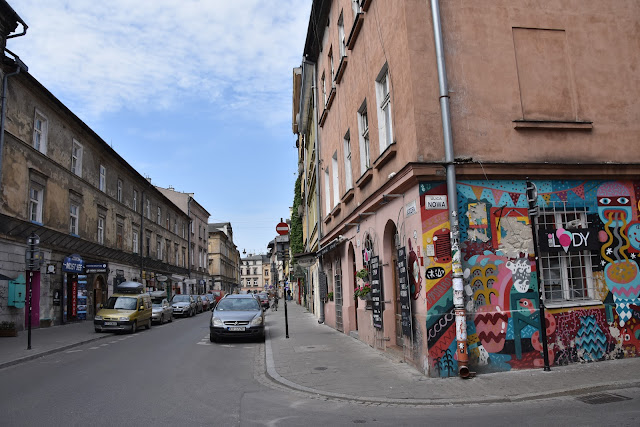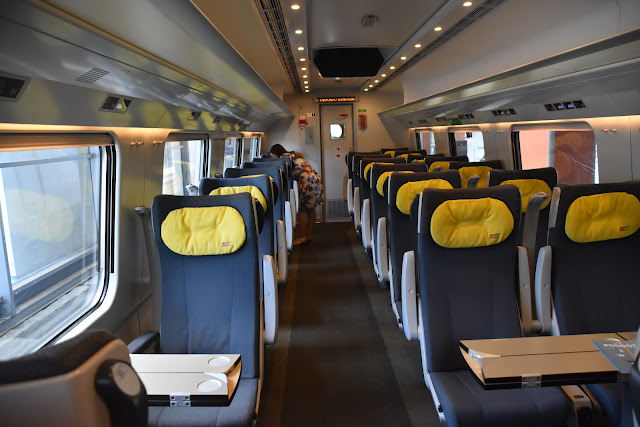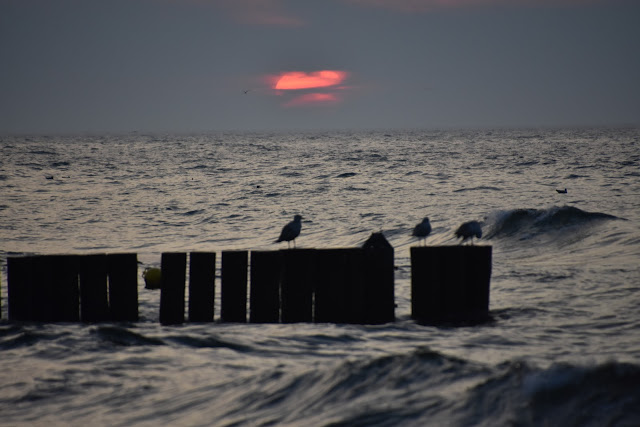Today I'm traveling from south to north of Poland. My destination is the town of Kolobrzeg. To get there I have two options, taking 5 Regional trains - or take 1 Regional and 1 high-speed train.
The first option with Regional trains would go through Katowice, Lubliniec, Poznan, and Koszalin and would take 10h50min with the longest journey between Poznan and Koszalin (4h52min).The second option would include 1 Regional train to Krakow (1h49min), then a long journey with EIP train (8h13min). In the morning, I have the option of two first trains that are viewed here, to the left is the train to Katowice, to the right for Krakow.
At the end, I'm taking the Polregio train 43408 from Oświęcim to Kraków Główny. The train is of type EN57FPS
The first trip goes with a very slow Regional train. However, I can note that both the railway and station along this route are being modernized.
To spend about 2h on this train is acceptable, but the thought of spending almost 5h made me decide the second option.
EN57FPS at Krakow
Some musical icons are touring in Krakow
I have 2,5h to spend in Krakow before my next train, so after visiting Auschwitz on the previous day, I'm heading to the Jewish quarter.
From Wikipedia: "Kazimierz is a historical district of Kraków and Kraków Old Town, Poland. Since its inception in the fourteenth century to the early nineteenth century, Kazimierz has been an independent city, a royal city of the Crown of the Polish Kingdom, a location south of the Old Town of Kraków Old Town, separated from it by a branch of the Vistula river. For many centuries, Kazimierz was a place of coexistence and interpenetration of ethnic Polish and Jewish cultures. Its northeastern part of the district was historic Jewish, whose Jewish inhabitants were forcibly relocated in 1941 by the German occupying forces into the Krakow ghetto just across the river in Podgórze. Today Kazimierz is one of the major tourist attractions of Krakow and an important center of the cultural life of the city."
Jan Karski Monument
Remuh Synagogue
High Synagogue
Gothic Corpus Christi Church
In 1993, Steven Spielberg shot his film Schindler's List largely in Kazimierz (in spite of the fact that very little of the action historically took place there) and this drew international attention to Kazimierz. (Wikipedia)
Schindler's List Passage
Rynek Główny - Central part of Krakow
Grunwald Monument
Renovation of the railway eastbound from Krakow
EIP 3802 is the service between Krakow and Kolobrzeg that takes 8h12min and it is operating only in the summer, as Kolobrzeg is a popular summer holiday destination
Inside this Express Intercity Premium train, ED250 - Polish version of the Pendolino train.
Between Krakow and Warszaw there are no stops as the train is taking the CMK trunk line (Centralna Magistrala Kolejowa), the only high-speed line in Poland
In 1st class, a snack and a drink is included
The snack was not enough for a lunch so I'm heading to the restaurant coach
I'm having Pierogi for lunch
Arriving to Warszaw
Train to Moscow
There is a longer stop at Warszaw Central station
The train is now taking the railway from Warszaw to Gdynia
There is a longer stop at Malbork
Bridge over river Vistula, Most Tczewski
Gdansk
Gdynia
As the trip is very long, it is already time for dinner - and what can be better than sauerkraut soup
The rest of the trip from Gdynia to Kolobrzeg goes on a slow and single track railway
Arriving to Kolobrzeg
From Wikipedia: "Kołobrzeg (German: Kolberg) is a city in the West Pomeranian Voivodeship in north-western Poland with about 47,000 inhabitants (as of 2014). Kołobrzeg is located on the Parsęta River on the south coast of the Baltic Sea.
During the High Middle Ages, the town was expanded with an additional settlement inhabited by German settlers a few kilometers north of the stronghold and chartered with Lübeck law, which settlement eventually superseded the original Slavic settlement. Later on, the indigenous Slavic population faced discrimination from the Germans. The city later joined the Hanseatic League. Within the Duchy of Pomerania, the town was the urban center of the secular reign of the prince-bishops of Cammin and their residence throughout the High and Late Middle Ages. When it was part of Brandenburgian Pomerania during the Early Modern Age, it withstood Polish and Napoleon's troops in the Siege of Kolberg. From 1815, it was part of the Prussian province of Pomerania. After the Nazis took power in Germany, the local Jewish population was discriminated against, deemed to be subhuman and eventually subjected to genocide. In 1945, Soviet troops seized the town, while the remaining German population which had not fled the advancing Red Army was expelled. Kołobrzeg, now part of post-war Poland and devastated in the preceding Battle of Kolberg, was rebuilt but lost its status as the regional center to the nearby city of Koszalin."
No further tracks from here
A night train is being shunted
My hotel for tonight, it must have been built during the time when Kolobrzeg belonged to Germany
The main attraction here is a long sandy beach




































































































































No comments:
Post a Comment